Unlocking Personalization — A Guide to Recommendation Engines
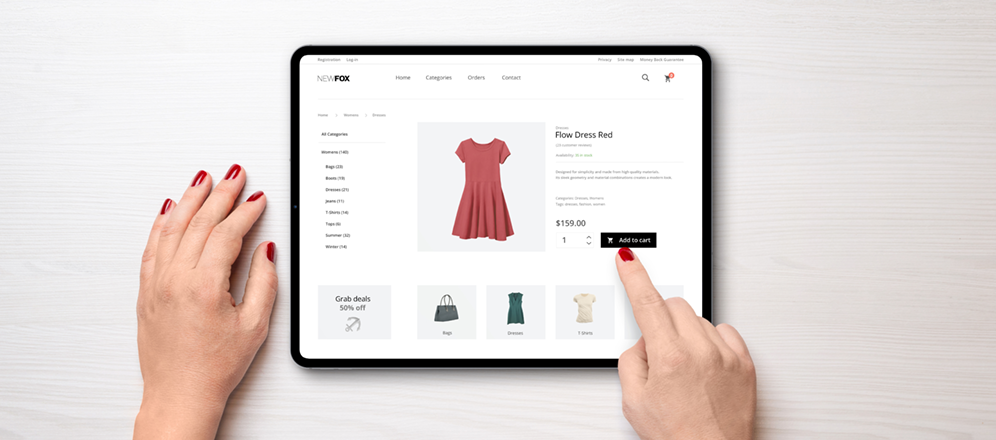
Wondering how to engage your customers effectively such that they willingly explore and buy more products through your digital store?
You have landed in the right place. Here is a comprehensive discussion on recommendation engines - the underlying tool to drive product discovery.
One of the main benefits of recommendation engines is that they can help businesses increase their revenue by boosting sales
A recommendation engine is a software system that provides personalized recommendations to users based on their past behavior, preferences, and interests. The use of these systems is not only beneficial for e-commerce but also for the entertainment and social media industries, to improve customer engagement, retention, and loyalty.
One of the main benefits of recommendation engines is that they can help businesses increase their revenue by boosting sales. By providing personalized recommendations, businesses can increase the likelihood of customers making a purchase. A study by Salesforce found that 35% of Amazon's revenue comes from its recommendation engine!
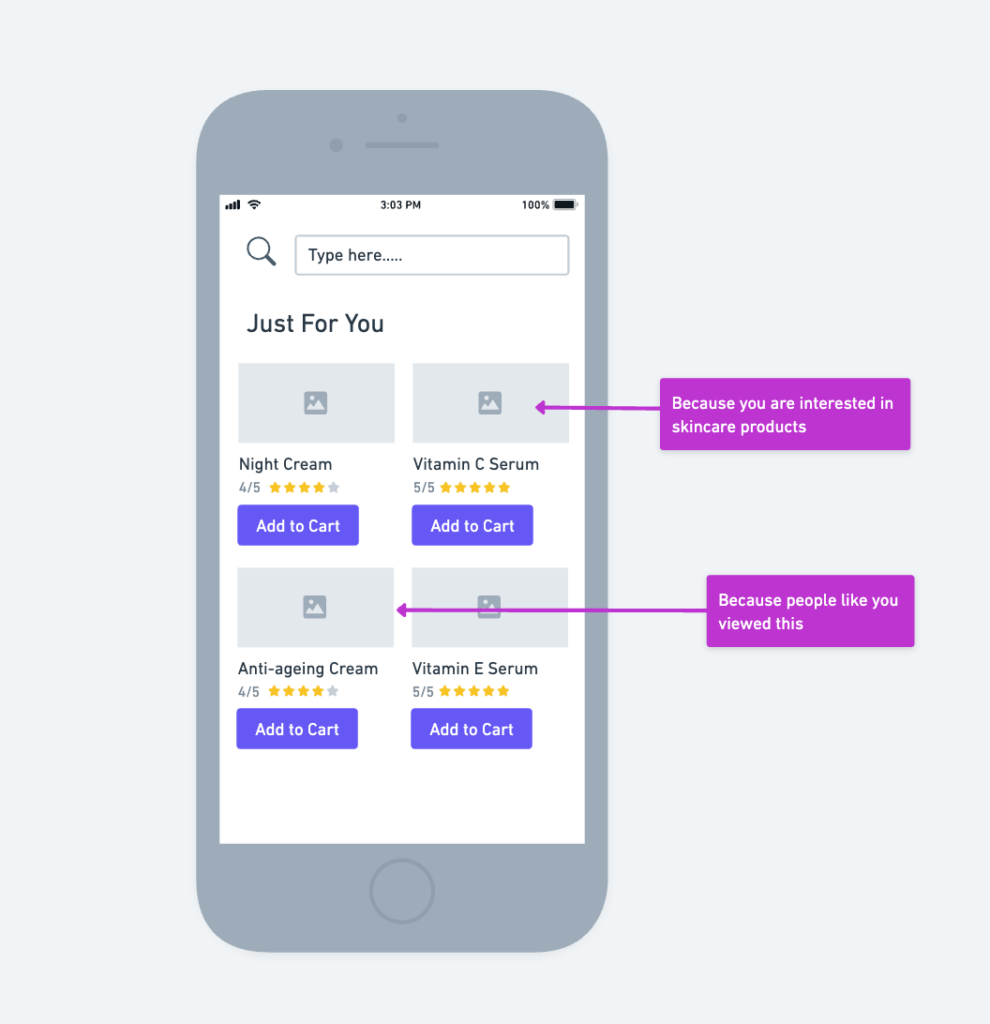
Figure 1: How the recommendations section can look in an app
Types of Algorithms
So how do these recommendation engines know what you would like to see?
The logic is quite intuitive, as we will see while discussing the three main types of recommendation engines algorithms:
- Collaborative filtering is a method that recommends products based on the behavior and preferences of similar users. This approach relies on the assumption that users who have similar tastes and preferences will like similar products. Collaborative filtering can be either user-based or item-based.
In user-based collaborative filtering, the system recommends products to a user based on the behavior of similar users. As the following figure demonstrates, two users have similar interests and attributes so they classify as “similar users”. Items purchased or viewed frequently by a similar user become the recommendation for the second user.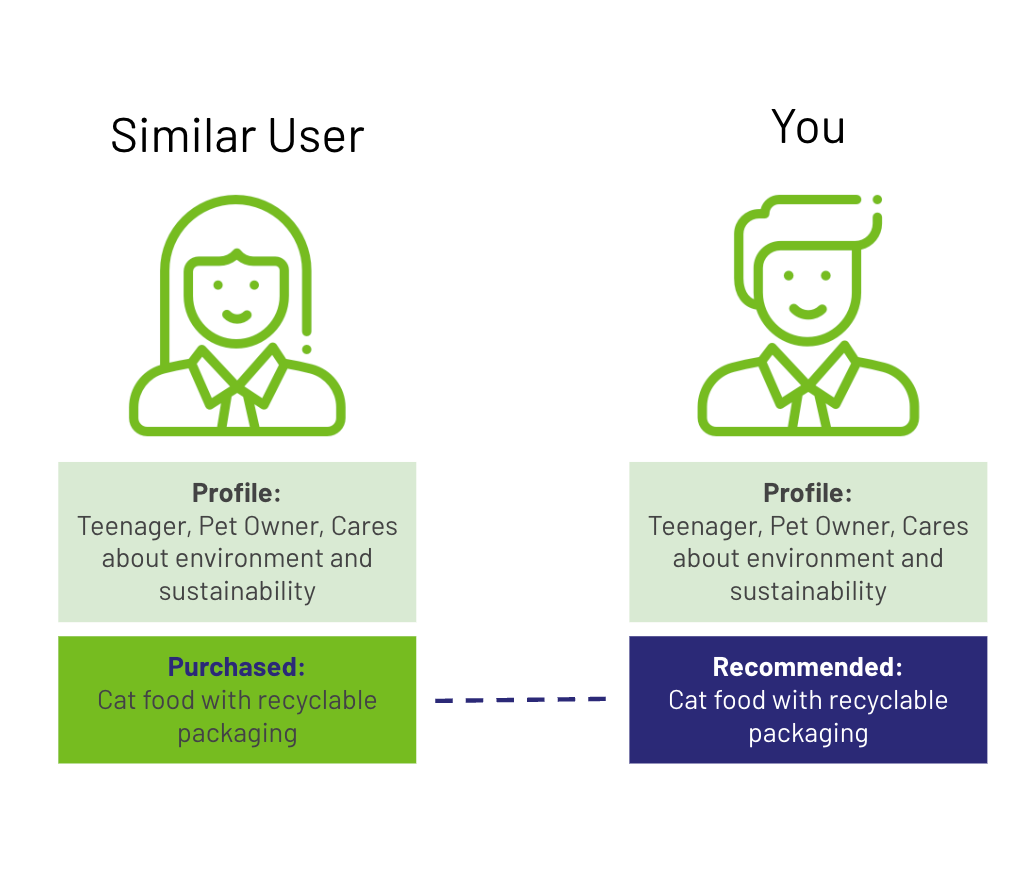
Figure 2: User-based collaborative filtering
In item-based collaborative filtering, the system recommends products to a user based on the similarity of the products they have already rated or purchased. If a user has been rating leather briefcases very highly while rating cross-body bags and purses negatively, they will be shown more variety in briefcases or items similar to briefcases.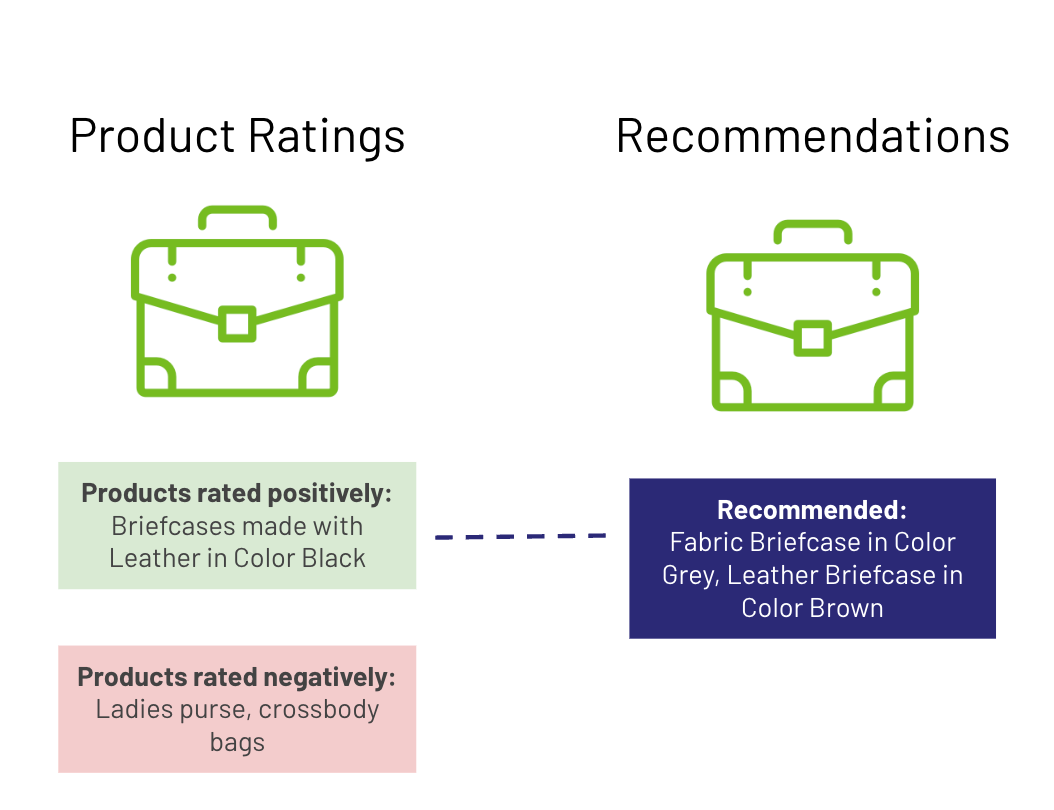
Figure 3: Item-based collaborative filtering - Content-based filtering is a method that recommends products based on the attributes of the products themselves. This approach relies on the assumption that users who like certain attributes of a product will like other products with similar attributes. Content-based filtering uses machine learning algorithms to analyze the features of the products, such as keywords, tags, and descriptions, to generate recommendations. Content-based filtering is particularly useful for recommending products that are difficult to describe using traditional metadata, such as music and movies.
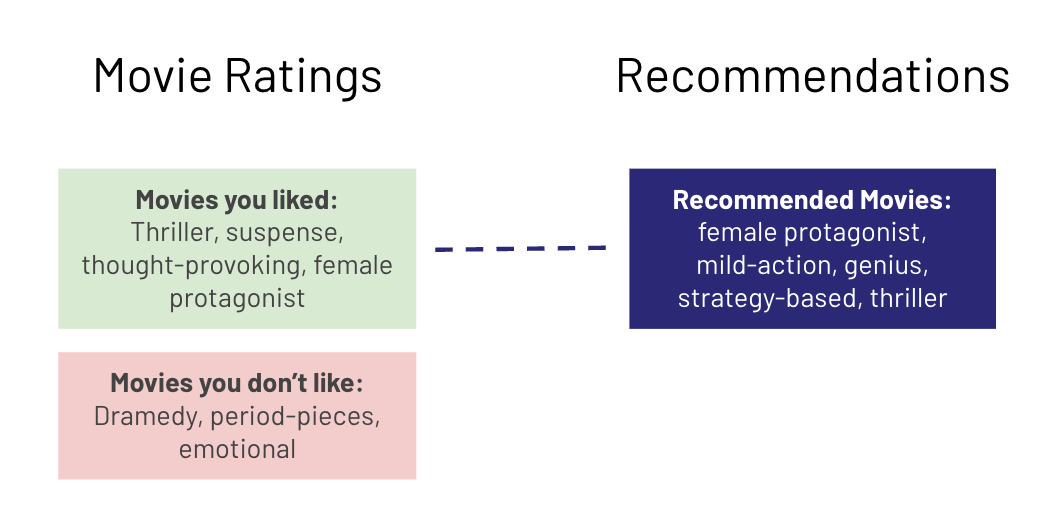
Figure 4: Collaborative Filtering - Hybrid recommendation engines combine collaborative filtering and content-based filtering to generate personalized recommendations. Hybrid recommendation engines leverage the strengths of both approaches to provide more accurate recommendations. By combining user behavior and product attributes, hybrid recommendation engines can generate recommendations that are both relevant and personalized.
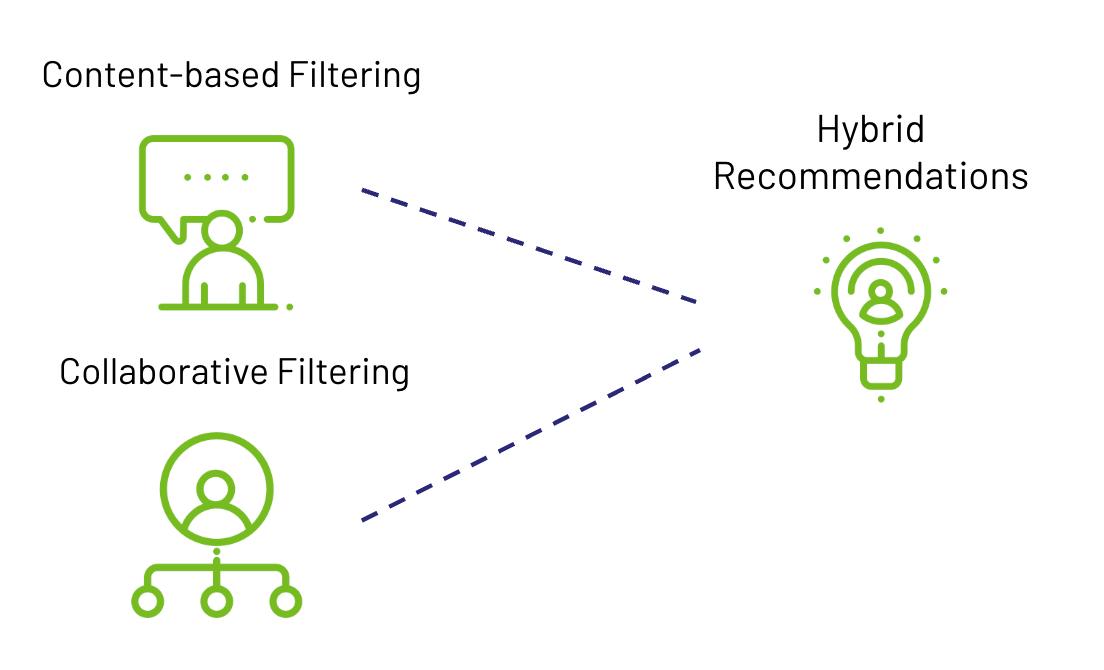
Figure 5: Hybrid recommendations
In addition to these three main types of recommendation engines, there are other approaches to recommendation engines, such as knowledge-based filtering and demographic filtering. Knowledge-based filtering recommends products based on explicit user preferences, such as size, color, and price. Demographic filtering recommends products based on demographic data, such as age, gender, and location. These approaches are less common than collaborative filtering, content-based filtering, and hybrid recommendation engines but can still be useful in certain contexts.
The Right Algorithm
Choosing what algorithm is right for you depends on your business domain, the data points available and what works best for your customer. Following are a few things to keep in mind when making your choice.
Data quality and availability:
The accuracy of a recommendation engine depends on the quality and quantity of the data that it has access to. If the data is incomplete, inaccurate, or biased, the recommendations generated by the engine may not be accurate or useful. Furthermore, collecting and storing data can be expensive and time-consuming, especially for small businesses that may not have the necessary resources. To address this challenge, businesses need to ensure that they have access to high-quality data and that they have the necessary infrastructure and resources to collect and store the data.
Cold start problem:
Another challenge that businesses may face when implementing a recommendation engine is the cold start problem. The cold start problem occurs when the recommendation engine does not have enough data about a new user or item to generate accurate recommendations. For example, a new user may not have a purchase history, and a new item may not have any ratings or reviews. To address this challenge, businesses can use a combination of techniques, such as knowledge-based filtering and demographic filtering, to generate recommendations for new users and items.
Algorithm selection and tuning:
Selecting the right algorithm and tuning it to generate accurate recommendations can be a complex process that requires specialized knowledge and expertise. There are many different algorithms and techniques that can be used to generate recommendations, and each algorithm has its strengths and weaknesses. Furthermore, the performance of the algorithm may vary depending on the characteristics of the data and the specific use case. To address this challenge, businesses need to work with experienced data scientists and machine learning experts to select the right algorithm and tune it to generate accurate recommendations.
Displaying Recommendations
There are several sections on an e-commerce website or app where you can plug in recommendations to improve the user experience and increase conversions. Following are some of the best practices:
Homepage recommendations:
The homepage is a key section of your e-commerce website and is a great place to showcase your top products and offers. You can use algorithms like collaborative filtering and popularity-based filtering to display "Top Trends" or "Most Popular" products. You can also use content-based filtering to recommend products based on the user's browsing history or previous purchases. Another option is to use hybrid filtering to combine different algorithms and provide more personalized recommendations.
Product detail page recommendations:
The product detail page is where users get more information about a specific product and is a good place to offer related or complementary products. You can use algorithms like collaborative filtering and content-based filtering to recommend products that are similar to the one the user is currently viewing. You can also use association rule mining to suggest products that are “frequently bought together”.
Cart page recommendations:
The cart page is where users finalize their purchases and is a good place to offer additional products or promotions. You can use collaborative filtering to recommend products that are complementary to the products already in the cart. But make sure you don’t overwhelm the customer and distract them from completing their purchase!
Search results page recommendations:
The search results page is where users see a list of products based on their search queries. You can use algorithms like keyword-based filtering and popularity-based filtering to display products that match the user's search terms and are popular among other users.
Category page recommendations:
The category page is where users browse products by category and is a good place to offer personalized recommendations based on the user's browsing history or purchase behavior. You may even consider rearranging your product categories based on user preferences.
It is important to zoom out and view your user’s entire journey on your website or app when planning the sections and algorithms for displaying recommendations. An effective implementation encourages personalized product discovery while balancing information overload and preventing the user from getting overwhelmed.





